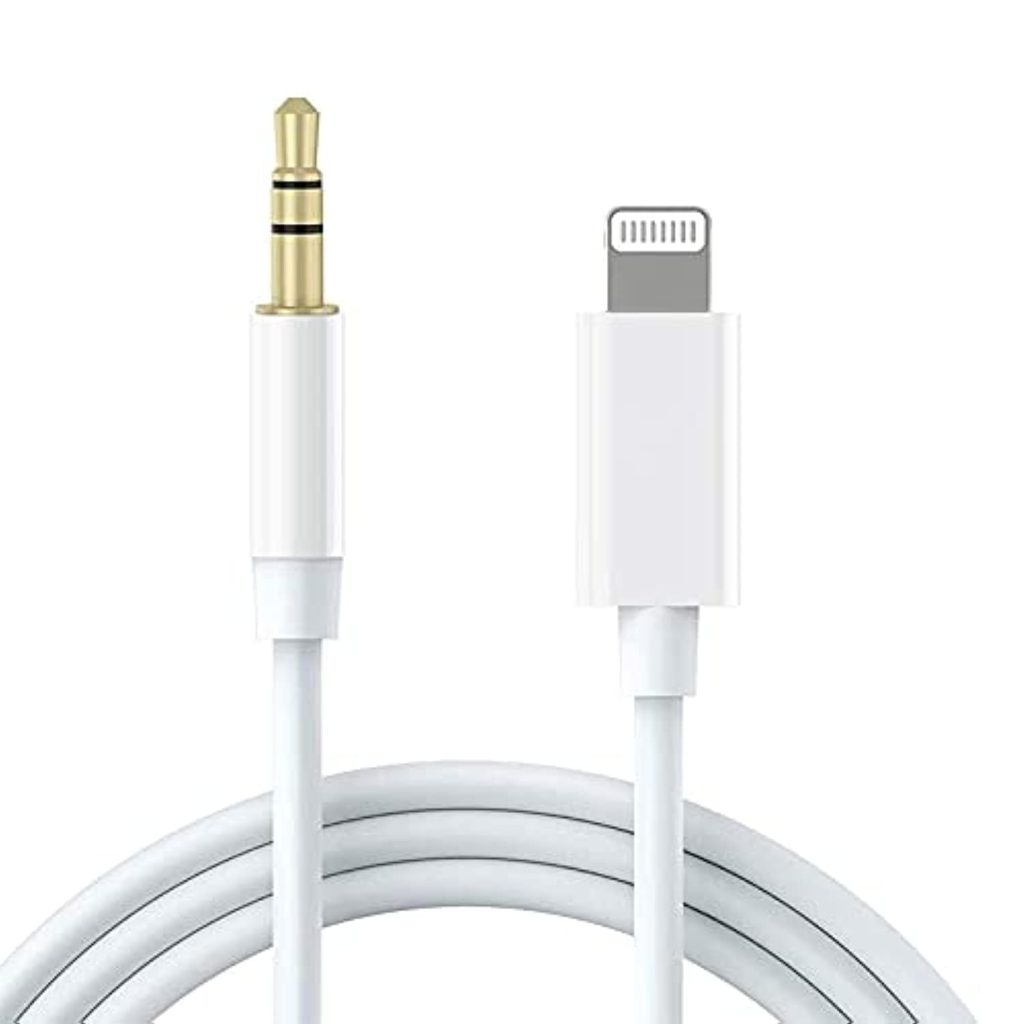In a world of wireless earbuds and Bluetooth speakers, sometimes you need a good old-fashioned wired connection. AUX to Lightning cables play a crucial role in seamlessly connecting devices of different generations, allowing you to enjoy your favorite music, podcasts, and more across a variety of setups. This article delves into everything you need to know about these handy adapters, their compatibility nuances, and tips for choosing the best cable for your specific needs.
Understanding AUX: The Timeless Standard
AUX (short for auxiliary) ports, are the ubiquitous 3.5mm headphone jacks found on countless devices. Here’s why they’ve endured:
- Analog Simplicity: AUX cables transmit analog audio signals, a mature and reliable standard.
- Near Universality: From car stereos to boomboxes and even some newer TVs, a wide array of audio equipment has AUX inputs.
- Beyond Headphones: While commonly associated with headphones, AUX can carry audio output from any compatible device.

Lightning: Apple’s Proprietary Connector
Lightning ports, found on modern iPhones, iPads, and select iPods, offer several advantages:
- Digital Versatility: Carry both digital audio and power, enabling device charging while connected.
- Reversible Design: No more fumbling to get the orientation right, just plug and play!
- Device Ecosystem: Apple controls Lightning technology, leading to a generally consistent experience across compatible accessories.
Why You Need an AUX to Lightning Cable
Here’s where these connectors collide and the cable’s value shines:
- iPhone to Older Car Stereos: If your car only has an AUX input, this cable is your bridge to directly playing your iPhone’s audio.
- Portable Speakers: Pump up the volume of your iPhone’s music through a wired speaker with only an AUX port.
- Legacy Audio Systems: Breathe new life into your vintage stereo or receiver by connecting your iPhone or iPad as a modern music source.
Important Compatibility Notes
Not all AUX to Lightning cables are created equal. Keep these in mind:
- DAC Required: A built-in Digital-to-Analog Converter (DAC) is crucial for these cables to function. Cheap “no-name” options often lack this, rendering them useless.
- MFi Certified: Apple’s “Made for iPhone/iPad” (MFi) certification ensures compatibility and quality standards are met.
- Functionality May Vary: While core audio output works reliably, some cables do not support inline microphone controls for headsets or phone calls.
Scenarios Where an AUX to Lightning Cable Excels
- Audiophiles on a Budget: If you have high-quality wired headphones and don’t want to invest in wireless ones, this cable is your budget-friendly solution.
- Road Trippers: These cables are perfect for those with rental cars or older vehicles lacking Bluetooth capabilities.
- Lag-Free Matters: For activities where audio sync is critical, like mobile gaming or music production, wired connections eliminate potential Bluetooth latency.
Choosing the Right AUX to Lightning Cable
With various options, here’s how to narrow down your selection:
- Length: Consider the distance between your devices. Options from super-short for in-car use to several feet for home setups are common.
- Durability: Braided cables and reinforced connector ends offer resilience, especially for travel or high-use environments.
- Brand Reputation: Options from Belkin, Anker, and Apple themselves inspire greater trust regarding MFi Certification and longevity.
- Extra Features: Some cables have inline volume/playback controls, convenient for certain scenarios.
Beyond Music: Additional Use Cases
While audio is the primary function, AUX to Lightning cables can also:
- File Transfers: Some older car head units allow music file transfer from an iPhone via AUX, although speeds are slow.
- Wired CarPlay: In rare instances where a car might have CarPlay but not Wireless CarPlay, the cable provides a workaround (data features require Lightning).
- MIDI Controllers: For the musically inclined, Lightning ports can connect MIDI instruments to iOS devices.
Troubleshooting and Alternatives
- No Sound? Ensure the cable is fully plugged in on both ends and your device volume is up.
- Intermittent Connection: Check for frayed cables or damaged ports.
- Alternative #1: Bluetooth Adaptor: Plug this into an AUX port, effectively making it a Bluetooth receiver your iPhone can connect to wirelessly.
- Alternative #2: Lightning to Headphone Jack Adapter: If the other device also lacks Bluetooth, this simple Apple adapter lets you use traditional wired headphones with your iPhone.
FAQs: Demystifying AUX to Lightning Cables
- Do they support charging my iPhone? Some do, but often only provide trickle charging, not fast charging. Priority is given to audio.
- Are they expensive? Prices vary. Expect to pay more for reputable brands, longer cables, or extra features. However, they’re still generally more affordable than wireless solutions.
- Where can I buy one? Electronics stores, online retailers (Amazon, etc.), or even the Apple Store itself stock these cables.
The Verdict: A Simple Solution with Staying Power
While the world increasingly goes wireless, there’s still a time and a place for AUX to Lightning cables. Their core function of providing analog audio connectivity remains remarkably useful in numerous scenarios.
By making informed choices about the specific cable you buy, considering the nuances of compatibility, and being aware of potential alternatives, you bridge the gap between your favorite devices, old and new.